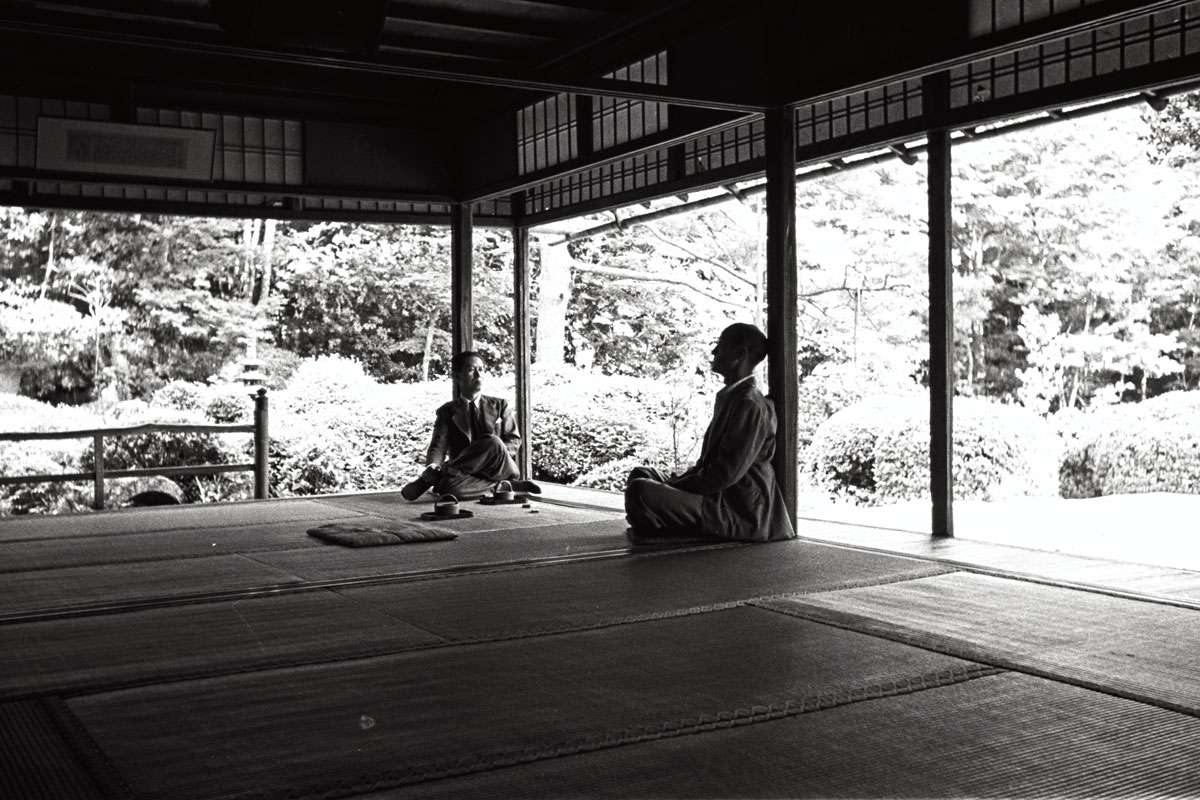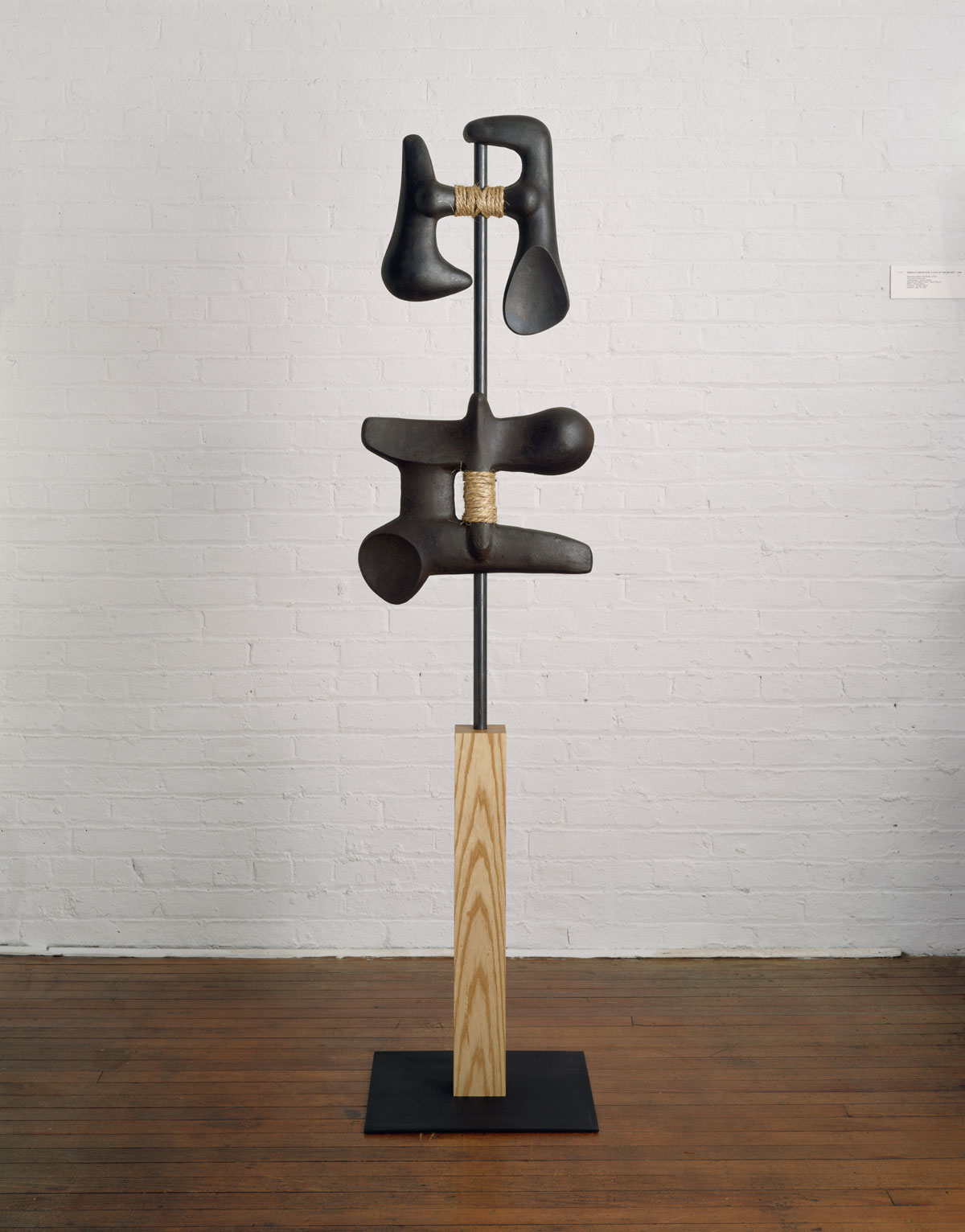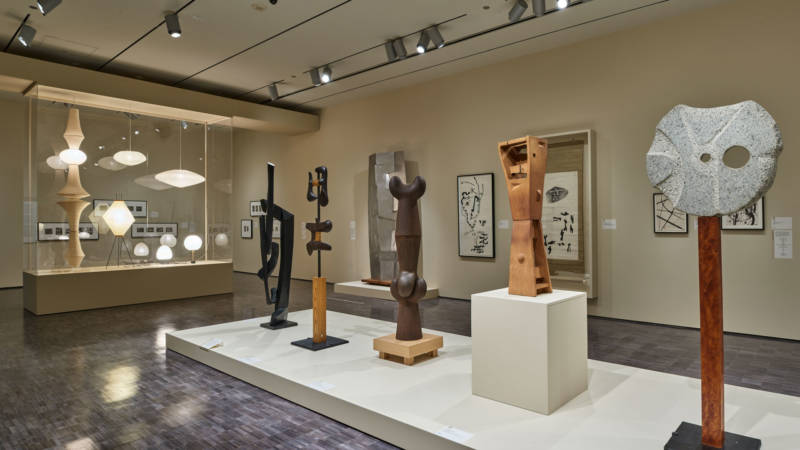Even decades after Saburo Hasegawa’s death, the artist and designer Isamu Noguchi would describe his friendship with Hasegawa as an “everlasting conversation.”
The two first met in 1950, when Noguchi was near the end of a two-year world tour, ostensibly researching leisure environments for a book project. Hasegawa served as Noguchi’s guide and translator in Japan, and their relationship of cultural, philosophical and artistic exchange continued for the next seven years, until Hasegawa died at age 50 in 1957.
Changing and Unchanging Things: Noguchi and Hasegawa in Postwar Japan arrives at the Asian Art Museum after a journey of its own. Organized by the Isamu Noguchi Foundation and Garden Museum in New York (a must-visit), the show premiered at the Yokohama Museum of Art earlier this year, traveling to the Noguchi Museum and now San Francisco, linking audiences who are likely much more familiar with Noguchi’s name than Hasegawa’s, even though the latter spent the last years of his career in the Bay Area.

Hasegawa wasn’t always a forgotten chapter in American art history. The two-gallery exhibition at the Asian Art Museum shows artists equally established in their careers. Both men were in their 40s when they met, both had traveled widely and brought to their work a cosmopolitan understanding of global art trends. In their own ways, both exported versions of Japanese culture and philosophy to Western audiences: the Japan-born Hasegawa through lectures and exhibitions in New York and San Francisco; American-born Noguchi through his translation of Japanese forms into modernist sculpture.
In the elegantly arranged exhibition, organized here by curator Dr. Karin G. Oen, the two artist’s works mingle freely. Noguchi’s stone, wood, ceramic and metal sculptures stand beside Hasegawa’s woodcuts, ink paintings and rubbings, echoing shapes and formal elements. Though neither artist’s work can be confused for the other’s, a kinship is evident, most often in the translation of two-dimensional shapes into three-dimensional objects (and vice versa).

Take the two “mu”s in the exhibition. In Japanese kanji, “mu” is a character that means “nothing.” But both Noguchi and Hasegawa seem to interpret “nothing” as a possible container for “something.” Noguchi’s My Mu is a delicate sculpture of Seto stoneware on three narrow legs, one of which curls into a slight foot. With that curl, it becomes an anthropomorphized figurine—possibly a pet—and a receptacle for proprietary feelings.

![Attributed to Saburo Hasegawa, 'Untitled [C.I-V],' approx. 1955.](https://ww2.kqed.org/arts/wp-content/uploads/sites/2/2019/10/H-P-1_E.2016.02_C_Roman_num_group_comp_1200.jpg)


